Looking back, a whimsical list…
After years of belt-tightening, the Bay Area’s classical music scene is standing as a vibrant example of hard work and clever programming. Despite facing under-funded public arts organizations and former donors struggling to pay their rising housing costs, most groups have squeaked through another year. And surprisingly, they did it with artistic integrity and creativity.
In no particular order, here is a list of some of the brighter moments of 2014.
Best Clown at the Opera
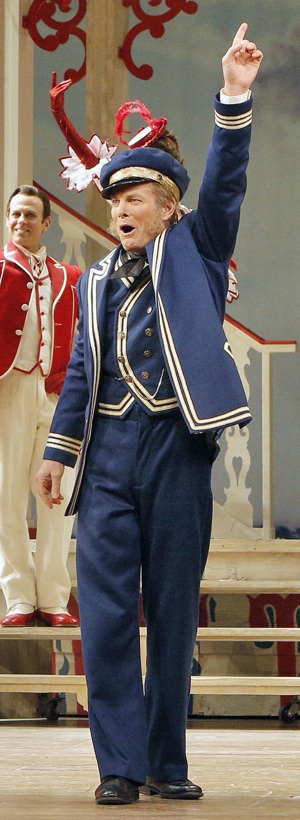 Although Rigoletto is always a chilling jester, my top pick for best clown was in a dazzling production ofShow Boat at the SF Opera. Under the tenure of General Director David Gockley, the San Francisco Opera has done up a lot of safe chestnuts, kowtowing to Glitter as the new Gold. But they’ve also commissioned a brand new work every season. Staging a musical as opera was inspired, and Show Boathad both glitter and gold. It was timely and troubling, and featured a star cast of fabulous actors, singers and dancers – and the show-stopping clown extraordinaire, Bill Irwin, who played Cap’n Andy with rubber legs and spot-on acting.
Although Rigoletto is always a chilling jester, my top pick for best clown was in a dazzling production ofShow Boat at the SF Opera. Under the tenure of General Director David Gockley, the San Francisco Opera has done up a lot of safe chestnuts, kowtowing to Glitter as the new Gold. But they’ve also commissioned a brand new work every season. Staging a musical as opera was inspired, and Show Boathad both glitter and gold. It was timely and troubling, and featured a star cast of fabulous actors, singers and dancers – and the show-stopping clown extraordinaire, Bill Irwin, who played Cap’n Andy with rubber legs and spot-on acting.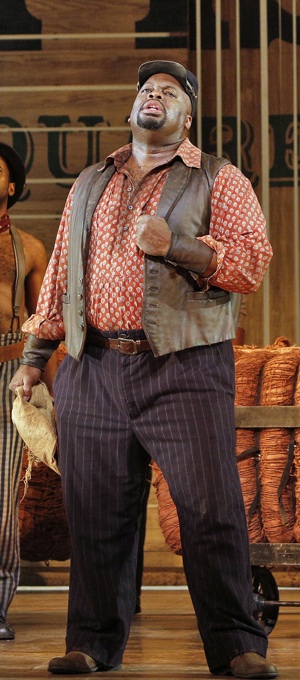
Bass Morris Robinson, who was another standout as Joe in the iconic “Ol’ Man River,” described this as a truly American art form. “This was our answer to the Italian opera… to what Puccini was writing in Italy.” Every aspect of this production, from the surprisingly current racial divides to the deeply affecting songs of love (and those naughty Broadway dancers!), pulled at our hearts or conscience… or somewhere else.
One wonders if it worked so well precisely because it was notexactly opera.
Best ten new voices, twice
Cal Performances gets a gold medal for edgy programming with two solid ventures. They partnered with the SF Contemporary Music Players for “Project TenFourteen,” commissioning ten distinctive composers to “reflect upon and address the human condition.” Although the first of the four concert series was in 2014, we will still get to hear the other three concerts in 2015. It’s on my stocking list!
Also, last December 5 Cal Performances showcased the Paul Dresher Ensemble and vocalist Amy X. Neuburg in their surprising venture where ten local composers wrote music based on found images and text. Titled “They Will Have Been So Beautiful: Songs and Images of Now,” this series packed a wallop. Kudos to all involved for thoughtful bravery!
Best piano versions of birdcalls
Pianist Jeremy Denk’s startling Adagio religioso, the middle movement of Bartók’s Piano Concerto No. 3 with the SF Symphony, compounded coloristic bird voices with slow arpeggios. It was a moment of wondrous beauty in a ho-hum program, but could remind one of Natasha Paremski’s brilliant performance of Oiseaux Exotique by Messiaen with the Berkeley Symphony in January of 2011.
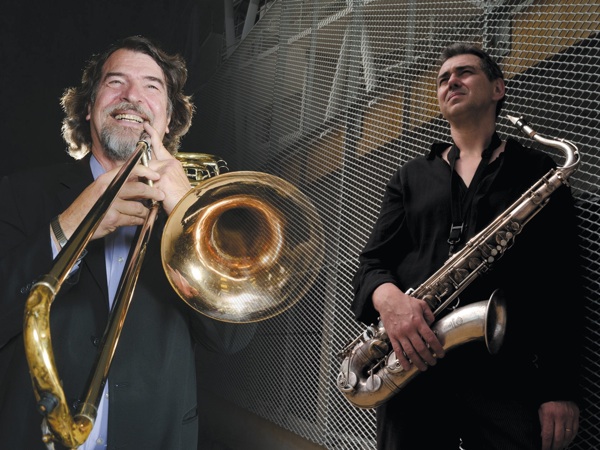
Best French/American Jazz Fusion for Orchestra
Admittedly, this appears to be a narrow category. Nonetheless, trombone and keyboard artist Chris Brubeck and sax player Guillaume Saint-James combined their composing talents to co-write an elaborate and deeply felt jazz-classical fusion on the Normandy invasion of World War II. Led by the ever-adventurous Michael Morgan, Brothers in Arts pulled the Oakland Symphony into a winning collaboration with a five-man jazz band.
Best one-liner on a Saturday morning
“Mozart was the Tupac Shakur of his age, greeted with both fanaticism and loathing,” said musicologist/composer Robert Greenberg. San FranciscoPerformances has been bringing Greenberg and the Alexander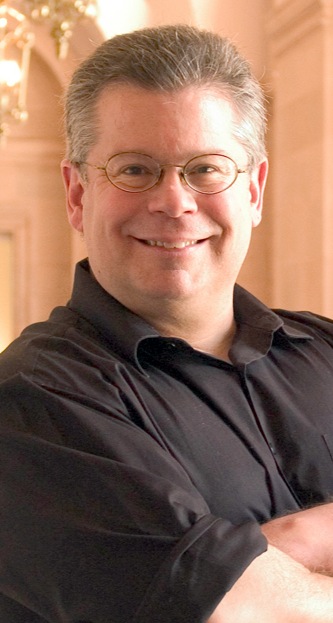 String Quartet together for concert/lectures for a decade, and these Saturday morning ventures are both potent education and lots of fun. This year they explored Mozart’s early quartets at St. John’s Presbyterian Church in Berkeley.
String Quartet together for concert/lectures for a decade, and these Saturday morning ventures are both potent education and lots of fun. This year they explored Mozart’s early quartets at St. John’s Presbyterian Church in Berkeley.
Best choral surprise
Ligeti’s Lux Aeterna was sung by the SF Symphony Chorus on a September 9 program of Strauss and vocal gems. Their ethereal and angelic clouds of sound weren’t really a surprise – these folks, prepared by Ragnar Bohlin and led by Michael Tilson Thomas, are always stunning.
Best stab at accessibility
This category may be shared by The Oakland East Bay Symphony in their free July 3 concert at Richmond’s Craneway Pavilion, and also by the a simulcast from the SF Opera’s stage to AT&T Park, where 26,000 fans squeezed in for a free showing of La Traviata. While one could camp out with garlic fries right on the Giants’ field while singing along to the famous Drinking Song, the Oakland Symphony had a sing-along to The Sound of Music… and fireworks… and songs from Frozen!
But actually there are less-publicized moments that should be included in the hard work of accessibility: the outreach programs of our orchestras. Oakland Symphony’s Music for Excellence (MUSE), Berkeley Symphony’s Music in the Schools program, and the SF Symphony’s Adventures in Music (AIM) all deliver music programs to every elementary school. It’s surprising what your ticket may be paying for (and yes, the ushers are volunteers).
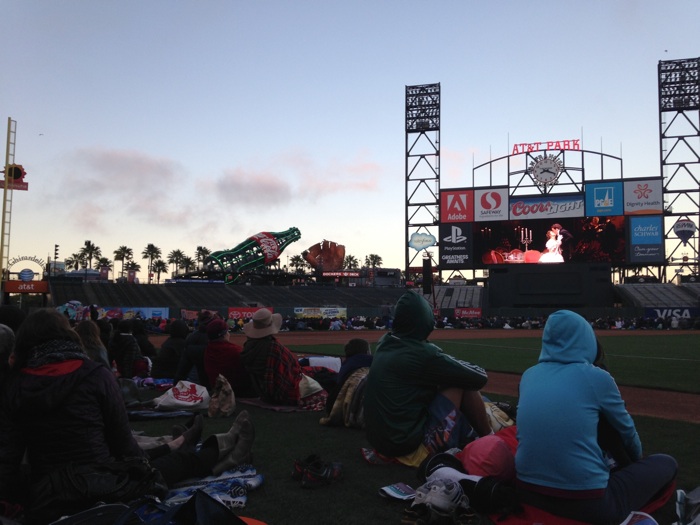
Most people on stage
Last May 16 Michael Morgan packed 250 singers and musicians onto the stage of Oakland’s Paramount Theater for a stirring rendition of Berlioz’ Requiem. The Oakland Symphony spread out to share stands with the Oakland Youth Orchestra, driving the music with supremely clean lines. And the Oakland Symphony Chorus, beefed up with… well, beef, had a massive bass presence and has seldom sounded better.
While this was short of the 400 people that Berlioz originally called for, it was a triumphant evening, and edged out the 230 people Bob Geary amassed at Davies’ Hall on August 22 for Brahms’ German Requiem.
Creepiest concert opera (big tenor likes little boys… and ain’t Santa Claus)
The SF Symphony did an absolutely marvelous job with Benjamin Britten’s Peter Grimes last June 27. Having the full orchestra on stage, we could almost drown in Britten’s sea-foam textures and gray moralities. When he wasn’t “accidentally” drowning his apprentices, Australian tenor Stuart Skelton delivered the character of Grimes with yearning and violence, sharply sweet and hoarsely open, punctuated with a touch of madness. Soprano Elza van den Heever shared the tangle of emotions with exotic vocal leaps that were fluid and magical, and the SF Symphony Chorus embodied the oppressive Village, driving the action like a train wreck.
We knew we had seen something extraordinary, and kept clapping for long minutes after the principals had all disappeared.
Most explosively depressing opera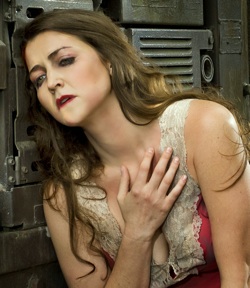
Anya 17, a modern treatment of sexual slavery and trafficking, was premiered by Opera Parallèle last June 20. This gifted opera company has moved from edgy productions of twentieth century to their second premiere, and it was a humdinger. A multi-layered score by British composer Adam Gorb and a haunting libretto by Ben Kaye took this most uncomfortable subject and turned it into riveting art. Go to anything this company does. Anything!
Most intimate opera experience
West Bay Opera takes the cake for completely absorbing experiences packed onto a tiny stage. They rocked Palo Alto’s Lucie Stern Theater last February 14 in Donizetti’sThe Elixir of Love. Of course, seeing that opera actually on Valentine’s Day in that cozy setting beats the pants off most date movies. As usual, Artistic Director and Conductor José Luis Moscovich created a heady elixir with his broad vision, incisive conducting and generous wit.
Best “victory” moment
On May 5 Joana Carneiro led the Berkeley Symphony in a vision of Beethoven’sSymphony No. 5 that was stunning in its scope and its subtlety. It was a complete surprise to hear such creative phrasing and dynamics coming from our own troops, which may be why Carneiro is increasingly sought to guest conduct around the world.
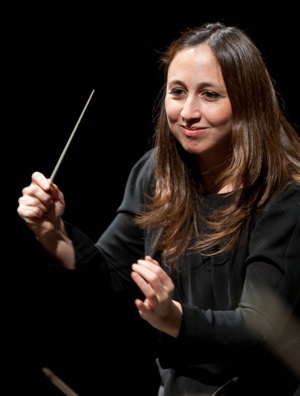 Also on that program was Kaija Saariaho’s Adriana Songs, a series of songs on birthing and raising the product of a rape. Mezzo Laura Krumm and the Berkeley Symphony were able to weave an otherworldly beauty out of shimmering dissonances and long-decaying notes.
Also on that program was Kaija Saariaho’s Adriana Songs, a series of songs on birthing and raising the product of a rape. Mezzo Laura Krumm and the Berkeley Symphony were able to weave an otherworldly beauty out of shimmering dissonances and long-decaying notes.
Lots and lots of quartets
This was a splendid year for quartets, with a few real standouts. Kohl Mansion hosted the Escher Quartet on its November 16 chamber music series, and they brought Shostakovich’s 15th and final quartet to bitter potency. Last summer this same brilliant foursome was featured at the Music@Menlo summer festival, where on July 23 they vividly interpreted all four of the Zemlinsky quartets, and later popularized these fiendishly difficult works with a CD release.
At Berkeley Chamber Performances the young Hausmann Quartet proved their chops at an October 21 concert in a Gruenberg romp, then brought down the house in Kevin Puts’ yearning Credo. That was certainly a high point of the year.
The Cypress String Quartet, a local treasure with an international following, delineated the profound musical friendship between Shostakovich and Britten in their January 26 concert in Palo Alto. As they prefer salon-style concerts and create a sound as rich as it is reckless, any of their concerts could be a life-altering event.
Hottest Beethoven moment
On March 9 the Miró Quartet also made a splash at Kohl Mansion, and their unique sound is best portrayed if I simply quote my own review of them.
“Two huge chords drew us firmly into the work. It was impatient, powerful, subtle, intensely personal and sweeping. In other words, it could only be Beethoven. And in this, Beethoven’s String Quartet in E minor, Op. 59 No. 2, the four showed their truly impressive accord. TheAdagio was simply gorgeous, with each instrument favoring part of some grand design: Ching expressed passion while Fedkenheuer, the second violin, embodied brotherhood. Gindele somehow extended the parameters, defining the heavens and the richly loamed earth on his cello’s long neck, while a viola’s chesty yearning peopled it with humanity.” Wow! After reading that I need a cold shower.
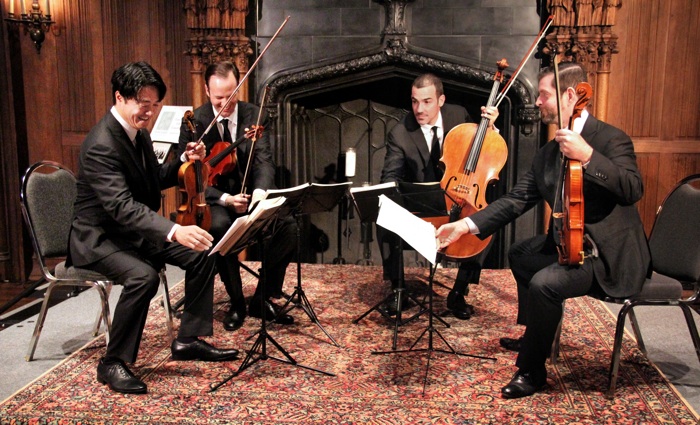
… and looking ahead.
Still struggling to emerge from the 2007 recession, our musicians and artists have found themselves moving to the lower end of a shrinking middle class, and that has had a rippling effect on the arts. Smaller orchestras are under-rehearsed and young musicians are faced with changing careers to be able to remain in the Bay Area. Additionally, arts education is completely absent in many public and charter schools, a victim of a staggering one-two punch: draconian cuts to California’s education followed by a failed policy of “teaching to the test.”
But this has also been a year of solid programs and shining moments, a reflection of our community’s concerted support. So if you want to be public spirited, treat yourself to some fun!
—Adam Broner
Photos, from top: Bill Irwin, left, and Morris Robinson, right in Show boat – photos by Cory Weaver; Chris Brubeck and Guillaume St. James – photo courtesy of OEBS; lecturer Robert Greenberg – photo courtesy of SF Performances; SF Opera on the Big Screen at AT&T Park – photo by Adam Broner; Anna Noggle as Anya in Anya17 at Opera Parallèle – photo by Steve DiBartolomeo; Joana Carneiro, conductor of the Berkeley Symphony – photo by Dave Weiland; Miró Quartet at Kohl Mansion – photo by Rick Gydesen.
